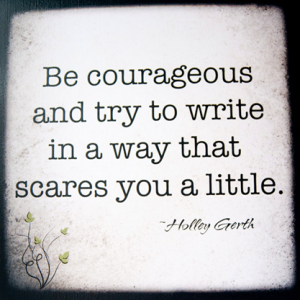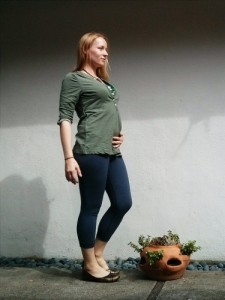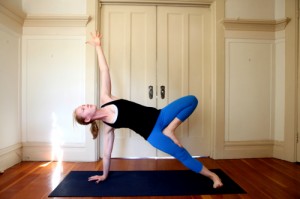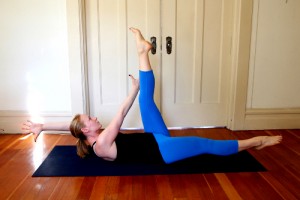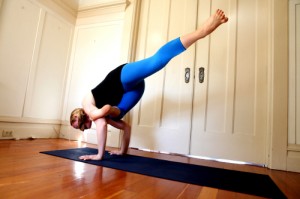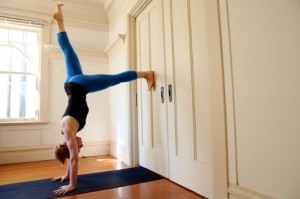February 9– February 15: 34 Weeks 0 Days – 34 Weeks 6 Days.
I nearly titled this post, “Commitments to my Future Daughter,” but “future” doesn’t seem to apply any more. She has grown big and strong, has visible and frequent movements, and even responds to Richard’s voice. On Monday, I read BabyCenter’s 34 Week Pregnant blurb, which included the following:
…you’ll be happy to know that babies born between 34 and 37 weeks who have no other health problems generally do fine. They may need a short stay in the neonatal nursery and may have a few short-term health issues, but in the long run, they usually do as well as full-term babies.
The message I got: I could have a perfectly healthy baby tomorrow. Woah. I cried at least six times that day. It didn’t feel like “I’m not going to be able to do this” crying or “I don’t have enough support” crying. It felt like coming into acceptance crying.

Bump update: I finally grew into my “I ate a seed” shirt. Everything takes more energy now. On Sunday, I went for a swim, then took Foxy to the beach, then had to have a three-hour nap.
Yogic Musings
When I did my first yoga teacher training, the instructor was against having kids. Her opinion was that our evolutionary instinct to love our kids above all others and protect them at any cost destroys our spiritual practice. Instead of seeing all beings as equal, as the same as ourselves, as one, having a child pushes us to create division, strongly differentiate between yours and mine, and to even start wars. However, at the same time, this teacher had a beautiful view on how mindful romantic relationships can actually accentuate the spiritual practice. I like to think that having children can deepen the spiritual practice in a similar way.
Before Richard and I started trying to get pregnant, I did a stream-of-consciousness journaling exercise from The Four Desires by Rod Stryker. Through this, I unearthed what parenthood meant to me and what I hoped to get out of it. Here are my thoughts (as a mother-to-be with no real experience): I believe that children crack us open, unleashing overwhelming feelings of love, connection, and protectiveness that may have been inaccessible otherwise. I believe that children awaken a power and courage within us to become the people we want our little ones to have as role models.
If we can look past the haze of fear, defensiveness, and possessiveness, I believe that our children can be our windows into the universe; we begin to see our children in other people, inciting our deep seated love, compassion, and acceptance for our children to seep out beyond the confines of our families and embrace others. Through meditation we recognize that if we truly love our children unconditionally (right down to the point that we’ve peeled away all the transitory labels and only that which we all have in common is left), we must love all beings unconditionally.
This does not mean that we don’t give our children special treatment. Our children are our little pieces of the universe to tend to, and we have a duty and responsibility (not to mention an unshakable desire) to bathe them in care, security, attention, and affection. However, when we cultivate unconditional love for all beings, we bear in mind that although we care deeply for ours and our own, they do not inherently have any more worth than others. With this insight, we raise our children to be moral, responsible, generous, socially conscious, and ecological. We hold them accountable for hurtfulness, dishonesty, and apathy, and don’t completely shelter them from feeling the consequences of their actions.
I believe that as our children age, we recognize that through raising them, we have grown just as much ourselves. As our children become more independent and require less care, attention, and protection (or start to outright shirk it), we may take the energy we have radiated toward our children and the deep-seated love they have inspired us to cultivate, and redirect them to the rest of humanity. Parenthood ignites within us a potential, fierceness, and power that we can then harness to fulfill our life’s purpose. I don’t consider raising children to be my dharma (life’s purpose)—I consider it to be part of my moksha, my spiritual development, my pathway to freedom from the internal barriers, limitations, and misconceptions that may hold me back from my dharma.
Addendum: Having children obviously isn’t the only way to find this type of spiritual development. I totally support people who choose not to have children. Also, children are my moksha, but someone else’s children may be their dharma (purpose), artha (means to achieve life’s purpose), or kama (pleasure), which is amazing. For me, it helps to be clear on how my children fit into my life when thinking about things like my career.
Commitments To My Daughter
As the birth of the baby approaches—maybe tomorrow, maybe seven weeks from now—it has become strikingly apparent that there’s a piece missing from the musings above: they are all about what I hope to get out of parenting, but speak nothing to how I aspire to serve my daughter. When people get married, they recite commitments to treat each other with honor, respect, and love. If this ritual is important in a wedding between two consenting adults, I feel it’s a paramount part of birthing a helpless, vulnerable, unconsenting being into a lifelong relationship with her parents. When Richard and I wrote our wedding commitments, we called them “affirmations” rather than “vows,” and I use the same language here. This means that some of these commitments are loftier than they’d be if I had to pinky swear that I’d get it right on my first try, but they engender who I aspire to grow into as a mother.
To My Dear Daughter,
These are my affirmations to you:
I see you, hear you, and feel you for who you truly are so I can communicate love and support in a meaningful way. (This line is from Daddy and my wedding affirmations, so I guess it’s one of our family values now). In turn, I am authentic with you so you can genuinely know me.
I protect you when you are defenseless. As you grow and develop independence, I teach you courage, assertiveness, diplomacy, compassion and self-confidence to set you up to fight your own battles. When that time of independence comes, I support you with messages of trust and empowerment, and avoid interference.
I love you even when you hurt me, hate me, or make choices I don’t agree with. However, loving you doesn’t mean I enable destructive behavior. I have the insight and courage to discern between when you need support and compassion, and when the most powerful thing I can do is to step back.
I discipline you intentionally and consciously, not out of anger, resentment, or anxiety.
I care for my own physical, emotional, and mental health so I show can show up energetic, present, and joyful for you.
I instill in you acceptance, honor, and respect for your body, and stand against messages of shame. I hope that developing a positive body image will inspire healthy choices, especially when it comes to choosing partners when you’re older. I [do my best] to give you space to experiment, to fall head-over-heels in love, and even to experience profound heartbreak. I can’t make any promises about what Daddy will make space for.
I will probably dress you in frilly dresses and oversized floral headbands for as long as you’ll let me, but beyond this I treat you with gender-neutral respect, confidence, and expectations. Just as I don’t deny you anything simply because you’re a girl, I don’t give you special privileges just because you’re a girl. I [try to] keep Daddy from spoiling you, but I suspect he wont be able to help it—you are his dream-come-true.
I trust Daddy to take care of you in every way so that you two can have a strong, healthy bond. I make space for him to share his passions and interests with you.
I give you enough structure for you to develop security and trust, and enough freedom to explore, express your creativity, and make your own mistakes. I allow this balance to shift as you grow and develop.
Although I am responsible for you and care deeply for you, I hold onto no disillusion that I possess you, control you, or am entitled to anything from you. I cherish anything you offer me—whether it’s physical, emotional, mental, or spiritual—as a gift. I set you up to achieve my best understanding of a successful life, but ultimately trust your intuition about what success means to you.
As I get to know you, I’m sure these affirmations will evolve, and I’ll probably come up with many, many more. I am so excited to hold you in my arms and to see who you become.
Love,
Mommy
